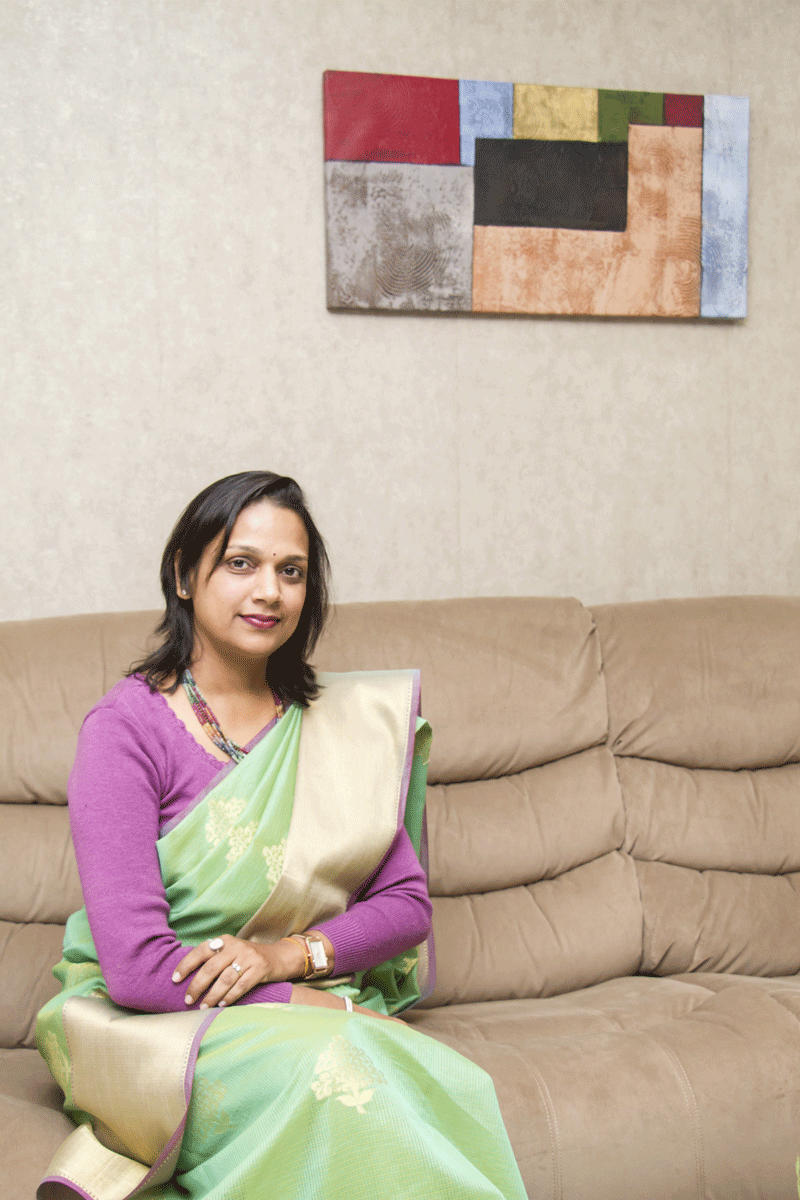Ambition Over Adversity
In a community where women are simply expected to live with the societal limitations imposed on them, it takes a strong personality and an ability to make bold choices for any woman to break those expectations. Binita Agrawal is such woman. Here she talks
 I was born in Bhadrapur, Jhapa, as a daughter to an engineer. I completed my architectural degree from Pulchowk Engineering Campus. Back then, in our community, women were suppressed by their elders; we were told not to point out mistakes or question their decisions. As a kid, I was pretty ambitious from the very beginning. Back then we had this weekly newspaper called 'Baalak' for which I used to write poems. And there was a show at Radio Nepal where I would go to recite them. But then again, in a backward community, my father had to listen to a lot of complaints about my education and interests as they said no man would agree to marry me due to my qualifications. Despite all those constraints, I always had this urge to stand out among the crowd since my childhood. I always thought of putting my name in the Guinness Books of World Record from an early age. Around 2011, I succeeded in doing that by building a three-storied card house in 11.37 seconds. Before that too I made numerous attempts to break world records in different categories mentioned in the book.
I was born in Bhadrapur, Jhapa, as a daughter to an engineer. I completed my architectural degree from Pulchowk Engineering Campus. Back then, in our community, women were suppressed by their elders; we were told not to point out mistakes or question their decisions. As a kid, I was pretty ambitious from the very beginning. Back then we had this weekly newspaper called 'Baalak' for which I used to write poems. And there was a show at Radio Nepal where I would go to recite them. But then again, in a backward community, my father had to listen to a lot of complaints about my education and interests as they said no man would agree to marry me due to my qualifications. Despite all those constraints, I always had this urge to stand out among the crowd since my childhood. I always thought of putting my name in the Guinness Books of World Record from an early age. Around 2011, I succeeded in doing that by building a three-storied card house in 11.37 seconds. Before that too I made numerous attempts to break world records in different categories mentioned in the book.
Well, coming back to my community, every woman had to share the same fate after her marriage. I myself being a housewife felt that all of my hard work on studies went down the drain. So I started a small group called 'Women's Creation' where we tried to encourage women from our community to be more outgoing, and to follow their ambitions. Despite all the complaints and negative feedbacks, even from my family, I kept on going. Apart from my husband, I didn't receive much support from my family on this. Even when I had achieved the feat of setting a world record, I hadn’t received much support from my family. The limitation of how a woman should behave in the society was always there. Furthermore, as an architect I wasn't getting the professional exposure that I wanted. I remember the struggles that I had to go through for my architectural designs. I was offered NRs. 500 by a client during my initial days, for my designs. Eventually, the tension from all these things piled up in my head, and I became ill with Sarcoidosis.
I am a strong believer in faith. You know what they say: the brightest day comes after the darkest dawn. I believe that, for a person, to succeed in anything, in addition to putting in hard work, he/she should also have luck. There's a reason why the alphabet Bha is preceded by Ma in the Nepali alphabetical order. Mehenat (hard work) is never enough for a person to succeed in life without a hint of Bhagya (luck).
I kind of lost hope when I first got struck by this disease. The paralysis struck me on my vocal cords at first be of too much intake of calcium. It is said that after a certain age women's bones start getting weak so everyone recommends you to take calcium. I did the same thing, without consulting any doctor. Hence, I suffered from Sarcoidosis. As I mentioned before, the darkest of dawn brings out the brightest of days. The day I got struck by this paralysis was my darkest night. But, somehow this disease became a crucial turning point in my life. I managed to gather my courage, and decided on living an independent life. I left home and moved here to Lalitpur, away from my husband's family. I'm not sure if I should call it a coincidence or good fortune, but the client who had initially offered me NRs. 500 for my designs came looking for me, after 15 years, for another project. He offered me a certain sum which I asked to increase, and the deal was struck.
This all happened in 2012, the year I had paralysis. Despite the illness, I never stopped focusing on my ambition. The creativity inside me urged me to start something new, and so I did. I started this group called Vintage where I sold my handmade paintings, and encouraged other artists to get involved in it as well. Luckily, the paralysis didn't affect other parts of my body apart from the facial area. But life was hard. I had difficulty breathing, speaking, drinking, and eating. When I tried drinking a glass of water, the water would end up flowing inside my nostrils. So there were real struggles.
The road to recovery was long. It took around three years for me to fully recover from this illness. Doctors would prescribe their own medications, assuring me that I would be fine after taking those medicines. When the medications did not work, I went to another doctor for help. This one suggested me that I should have a surgery in vocal cords. Before deciding on a surgery I consulted with my family. We then decided that if a surgery was necessary then why not get it done abroad where there would be better facilities and resources. So, off we went to New Delhi.
After my visit to New Delhi, I felt that a good diagnosis is really important before jumping to any conclusions. Here, we tend to assume that doctors do numerous tests for the sake of soaking money of their patients, but diagnosis is really important. During my initial diagnosis, the doctors there found out that my nerves were tied up in a knot around the paralyzed area. Now these symptoms were all associated with cancer, but they convinced me to stay calm and wait for the results. Finally they came to the conclusion that I had Sarcoidosis. They recommended me some steroids, as there were no medications available for this condition. I was supposed to take these steroids for a long time, but at one point I stopped taking them. I instead started focusing on natural healing through diet and physiotherapy. Eventually, I finally got freed from this condition, and at the moment life's good.


